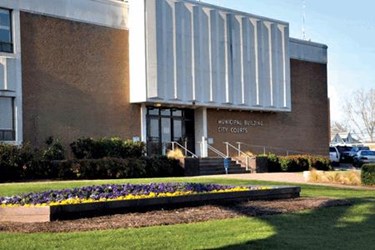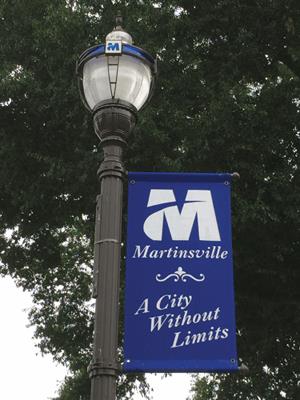Water Meter Upgrade Delivers More Than Accurate Readings

Municipality benefits from guaranteed savings, reduced costs, and customer service accolades
Martinsville Project At-A-Glance:
- Location: Martinsville, VA (population: 13,821)
- Project Cost: $7.8 million
- Guaranteed Savings: $9.7 million over 15 years
For much of the last decade, city leaders in Martinsville, VA, had been preparing themselves for a significant but inevitable capital expense: replacing the city’s nearly 7,000 water meters.
“Some of them had been in place for 20 years or more, and as older meters degrade they tend to run slower,” said Leon E. Towarnicki, City Manager. “So we knew we were losing a certain amount of revenue because we weren’t capturing the complete usage that was occurring.”
And yet, like many municipalities, Martinsville leaders struggled to fund the much-needed meter upgrade. “We didn’t have an option to go out and raise taxes or print money so we had to get creative, especially if we wanted to take metering to the next level and go with a more advanced, automated system for both water and electric meters.”
The No-Capital-Needed Option: Performance Contracting
 The city issued a request for proposals and selected Johnson Controls after the company demonstrated how the project could be financed through guaranteed savings.
The city issued a request for proposals and selected Johnson Controls after the company demonstrated how the project could be financed through guaranteed savings.
Under an energy savings performance contract, the $7.8 million project cost would be offset by guaranteed energy and operational savings of more than $582,000 a year — for a total payback of just 13 years.
With a financing mechanism in place, work got under way to:
- Replace 6,800 water meters
- Replace 8,300 electric meters
- Replace 3,200 street lights
Bottom Line Benefits
The 12-month project wrapped up in March 2017 and has since given the City of Martinsville significant opportunities to:
- Increase Meter-Reading Accuracy. Prior to the upgrade, the city estimated it was losing more than $170,000 annually due to inaccurate water and electric meter readings. The new water meters are guaranteed to deliver a greater level of accuracy (98.5 percent) over a 20-year lifetime, allowing the city to bill customers more precisely and capture significant revenue that might otherwise have been lost.
- Reduce Costs. With new meters in place system wide, maintenance costs have been greatly reduced. Plus, because the new meters are read electronically at city offices, it’s no longer necessary for water department employees to drive the city and physically read each meter at each home and business. As a result, the four-person meter-reading crew and its fleet of four city vehicles was reduced by half. “We are seeing some savings there and fortunately, no one really lost a job,” said Towarnicki. “One person retired and another moved to a different job with the city.”
- Deliver Proactive Customer Service. Another advantage of electronic monitoring is that it’s a continuous process, so any unusual activity can be flagged immediately. “This gives us an opportunity to proactively call the homeowner and say, for example, ‘There’s a lot of water going through your meter. Please check around the house for leaks or toilets that may be stuck open,’” said Towarnicki. “the new metering equipment allows us to carry customer service to a level that we haven’t had here before.
“That’s happened quite frequently and homeowners are extremely grateful to get that call right away, rather than have issues go unnoticed that might end up costing them hundreds of dollars in excess water charges or — worse yet — causing significant water damage.”
The advanced meter infrastructure (AMI) network also sends real-time alerts when it senses electric meter anomalies. “It can sense when power is out and it can report directly,” said Towarnicki. “It also detects unusual changes in temperature that could be caused, for example, by a short in the meter which could pose a risk of fire.”
In addition to the electric and water meter upgrades, the project also included the replacement of more than 3,000 street lights with new LED lighting, which shines a higher quality, more consistent light. It’s also more cost effective.
“When you look at municipal finances, there’s just no way you have the money to do a multi-million dollar project like this when you can’t adequately fund schools or public safety or some of those other critical needs,” said Towarnicki. “But there are ways to make projects happen, and performance contracting is certainly a great option to consider.”
